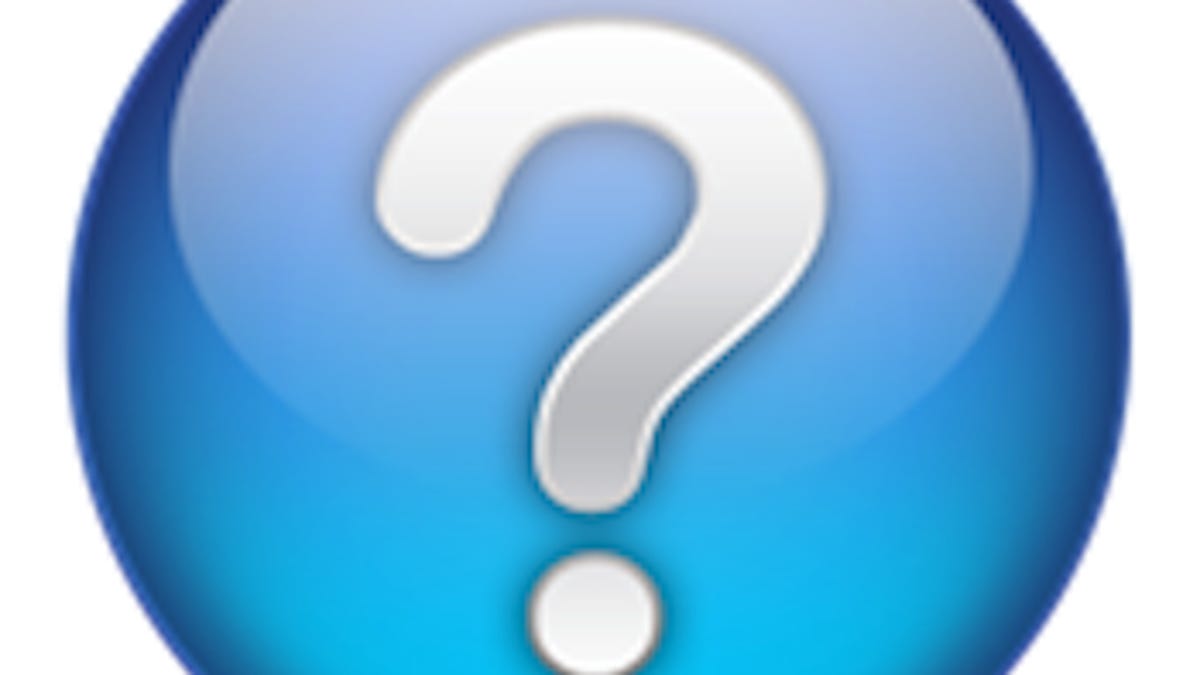Q&A: MacFixIt Answers
This week readers e-mailed Mac-related questions on hiding specific file types in the Finder, and more.

MacFixIt Answers is a feature in which I answer questions e-mailed in by our readers.
This week, readers wrote in with questions on hiding specific file types in the Finder, managing a program opening numerous documents when launched, dealing with "file in use" warnings in the Finder, resetting a Mac to factory default settings, and concerns about memory leaks in Apple's Dashboard feature. I welcome views from readers, so if you have any suggestions or alternative approaches to these problems, please post them in the comments!
Question: Hiding files of a specific type in the Finder
MacFixIt reader Nicolas asks:
Is there a way to hide (from Finder and the Terminal) a specific kind of file. Say, I would wish that all existing (and all new) .skim files are hidden. Can it be done?
Answer:
Unfortunately, there is no central service in OS X for hiding specific file types. You can write a script that will identify these files and hide them, and then run it on a regular basis, but this could possibly take awhile each time it is run. The command to use would be similar to the following:
find / -name "*.skim" -exec chflags hidden {} \;
To undo this command, repeat it but replace "hidden" with "nohidden." You can use "sudo" in front of this command to have it find all files in the filesystem, but without it only those your account has access to will be found and acted upon.
Question: Applications opening all documents when opened
MacFixIt reader Constance asks:
I updated my Mac OS X v10.7.5 Supplemental Update v1.0. Now when I open Microsoft Word, all my documents open. The only way I can stop the mayhem is Command-Option Esc. Is there a way to roll back the update or fix the problem?
Answer:
To fix this issue, go to the Finder's Go menu and choose "Library." Then locate the folder called "Saved Application State" and open it to reveal saved window settings for your various applications. Locate the folder called "com.microsoft.Word.savedState" and remove it, followed by launching Word. You can do this for any application that seems stuck and will not save its sessions, or which seems stuck on opening numerous documents when launched.
Question: File in use warnings hindering file management
MacFixIt reader Jeff asks:
I just upgraded to Mountain Lion. Now, many "file in use" locks driving me crazy. For example, after new PDF files are created, if I try to delete one I get "file in use" and cannot proceed. This happens across various apps (cannot pinpoint). Any suggestions?
Answer:
Try using Disk Utility to check for filesystem errors by selecting your boot volume and clicking the verify button. Do this while also selecting the drive itself to verify the partition map.
In addition to this check, does the system release the files if you close Preview or whatever other programs you have used to create and view the files? Sometimes programs can maintain a lock even if they are open, so doing this should ensure they released them.
Question: Resetting a Mac to factory defaults
MacFixIt reader Bimal asks:
I have a iMac 21.5, mid-2011 that was preinstalled with Mac OS X Lion when I purchased it in mid-December 2011. I need your guidance on how to go about restoring it to the factory state. I have read on the Net that it is a 4GB downloadable restore/repair and my broadband type PPoE is not supported. Hence a problem of installation media. Is there a way to create a DVD from the existing installation?
Answer:
While you can clone your system to make a bootable image of it, this will not create an installer that will reset your system to factory defaults. The only options to do this are to use the Recovery HD partition, create a Lion installer from the App Store (though you would have had to purchase it to do this), or use a home router to establish your PPPoE connection.
Do you have a home router that you can set up with the PPPoE connection? If so, then you can use this setup just fine to reinstall Lion by holding Command-R at bootup to get to the OS X Utilities. If you do not have this option, then your only solution would be to either obtain a copy of a Lion installer (though they are not sold anymore) or take your system to an Apple store to have them wipe and restore it.
My approach for this would be to set up a small and cheap router that supports PPPoE connectivity.
Question: Dashboard using up memory
MacFixIt reader Jose asks:
I have trouble with Dashboard in Lion 10.8.2! It eats memory until the computer does not move. I see it in Activity Monitor. I cannot fix this!
Answer:
Do you have any third-party widgets in the dashboard? If so, then try removing them to see which ones may be contributing to the issue. One approach to this is to remove all of your dashboard widgets and then test it to see if the problem persists, and if not then try re-adding each one-by-one and testing accordingly to see which one causes the problem.
Questions? Comments? Have a fix? Post them below or
e-mail us!
Be sure to check us out on Twitter and the CNET Mac forums.

